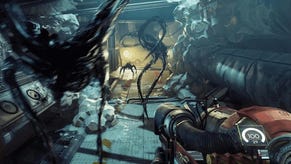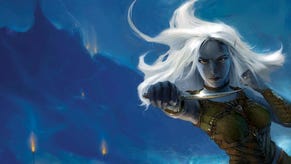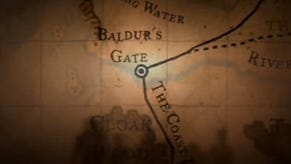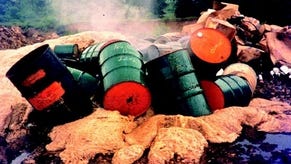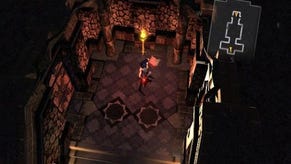Baldur's Gate: Dark Alliance II
Another hackandslash about increasingly shadowy feline predators. No?
When Baldur's Gate: Dark Alliance was first released, it made more than a few RPG fans uncomfortable. While we were happy to see a new game based on the revered Forgotten Realms universe, we weren't so happy about the choice of genre - unlike the previous games to bear the Baldur's Gate name, Dark Alliance was a straightforward hackandslash. Where 'die' had once been the singular form of 'dice', now it was merely something to scream at hordes of goblin archers...
Yet surprisingly, despite our initial misgivings, Dark Alliance turned out to be a great game. And, in the true spirit of role-playing, was far more fun to play with a friend than alone. So it should surprise no one to see that a sequel has hit the shelves - but does the simplistic gameplay still hold up in the second outing?
Memories To Treasure
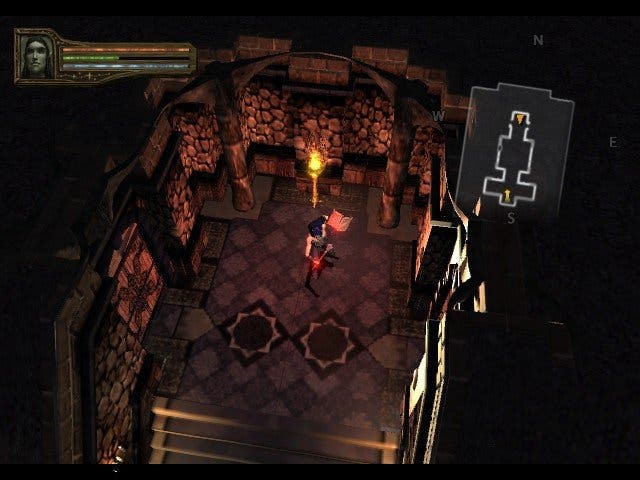
Dark Alliance II is a game that I waited a long time to play. This anticipation had nothing to do with fantasy, RPGs or pretty Elven women; rather, it was a result of the utterly brilliant time I had playing the first game through with a friend. In fact, during its short lifespan Dark Alliance was probably the most compelling co-op game I've ever experienced.
But, truth be told, while most people probably played the game like a medieval Streets of Rage - working together to kill everything - my friend and I placed much more emphasis on 'loot racing'. Basically, we got far more laughs out of running to treasure and levelling up than simply hacking our way through hundreds of enemies.
The truth is that without the loot and the ability to customise characters, Dark Alliance would have been no more than a very polished, slightly boring slashfest. But though its sequel places even more emphasis on character differentiation and customisation, there's no doubt that some of the fun has been lost along the way.
Uncomfortable Alliance

Unlike its predecessor, Dark Alliance II was developed by Black Isle Studios and not Snowblind. Considering their past handling of the Baldur's Gate licence, this was never likely to bother fans of the first game. Yet unfortunately the game has suffered as a result of this transition, Black Isle Studios or no. For the most part this is a worthy sequel, but a few of the changes made - and the changes that weren't - might divide fans of the original.
A perfect example of this lies with the five new characters to choose from. (The original three heroes have been kidnapped by the game's antagonist, a vampire, so they aren't available to select this time around.) There's much more variety in the sequel, with a necromancer, monk and rogue now complimenting the standard warrior and cleric classes. On the plus side, each of these characters plays very differently from the others, and abilities reflect their class far more than in the first game. For instance, the Dwarven rogue is the only character who can forge weapons for cheap, while the necromancer summons creatures to aid him in battle.
The negative side to this though is that it places a bigger gap between players in co-op mode. In other words, the competitive aspect of the two-player game is negated slightly. After all, monks and warriors rarely find themselves racing after the same weapons and armour, or even fighting with the same degree of effectiveness.
Di-looting the gameplay
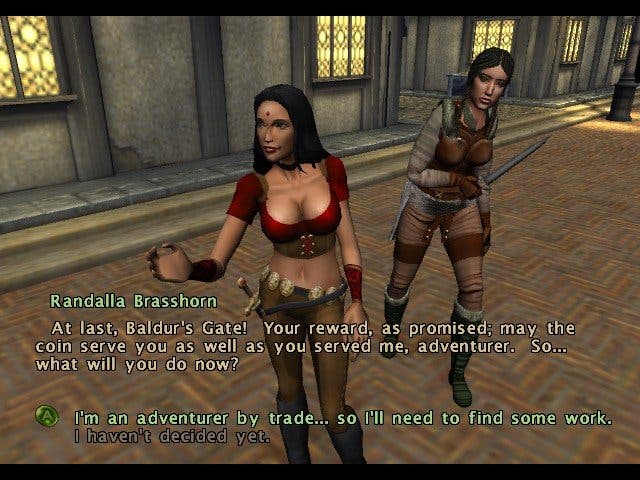
This increased differentiation between characters is something that most people (especially single players) will welcome, because it does prolong the game's lifespan. And, truth be told, I would have welcomed it too were it not for one very silly change made to the game's core engine. In the first game, any gold that was picked up by a player was his and his only. In addition, any cash gained from selling loot was also separated from other players. In other words, each player had his or her own little stockpile of gold. So when you wanted to buy new equipment and items, it was the loot that you had collected that dictated your spending power. You can see where this is going, right? In Dark Alliance II, the gold is shared between players. It doesn't matter if you pick it up on the ground or sell a weapon - any income is made available to both players.
Thus the emphasis has switched from killing enemies and racing for the loot they drop to, well, just killing them. As a result, players now have no option but to work together - it doesn't matter who kills what creature, because there are no benefits to being a step ahead of your friend. So happy-happy friends who like nothing more than to share and share alike will love this change. Meanwhile, my miserly friend and I resorted to a calculator to work out who had earned the most gold - which is more akin to real role-playing than a hackandslash. [And bloody boring in any event. -Ed]
Forging ahead (or not, as the case may be)

If the move away from loot racing doesn't bother you, then there's little else Dark Alliance II does wrong. Just like all safe sequels, it lives by the adage 'if it ain't broke don't fix it'. This time around, there are about 80 levels to play through (about ten hours of gameplay), a whole bunch of new enemies, a few optional side quests and some nice tweaks to the controls. In terms of progression, the only real difference between this and Dark Alliance is that the first game felt like it had better structure to it. In fact, DAII feels more like an expansion pack in that regard, with players sometimes given the option to complete quests in any order they choose. As with the removal of loot racing, the developer seems to have misjudged what made the original game so charming.
Another changes that backfires is the new 'forging' option. As you might imagine this lets players take equipment of 'fine' quality and customise it into an enchanted item. To do this however requires the use of gems and rune stones, which are then attached to the item. Finding or buying the stones (and then paying to have them forged into new items) is both expensive and slightly repetitive. After the first few creations, the activity becomes more of a chore than an act of interest. Perhaps a better option would have been to spread an abundance of unique equipment across each mission, but I'm sure many gamers will prefer the idea of making their own. As with the other slight changes, it really depends on how you like to play the game.
Aesthetically, Dark Alliance II is virtually identical to its predecessor. Obviously there are the new characters, enemies and equipment, plus some pretty landscapes, but the engine remains exactly the same. The voice acting and lovely water effects are as good as ever, while the plot is slightly more complex (though unremarkable, nonetheless). Overall, the whole experience just picks up where the first game left off.
A role to play
It's hard not to be disappointed in Dark Alliance II. However, it's equally hard to criticise such a polished effort. On the one hand, it offers more of the great hack and slash gameplay that - for some strange reason - no one has emulated properly since the first Dark Alliance. On the other hand, the magic of the original has definitely been diluted, where it really should have been enhanced.
As it stands, this is still a highly enjoyable two-player affair, but the lack of four-player and online support - even on Xbox - smacks of a by-the-numbers attitude. Meanwhile the forthcoming Champions of Norrath offers both and it was developed by Snowblind. Whether Norrath will take Dark Alliance's mantle remains to be seen, but either way fans of the genre will have plenty to shout about. Even if they just end up shouting 'die'.

